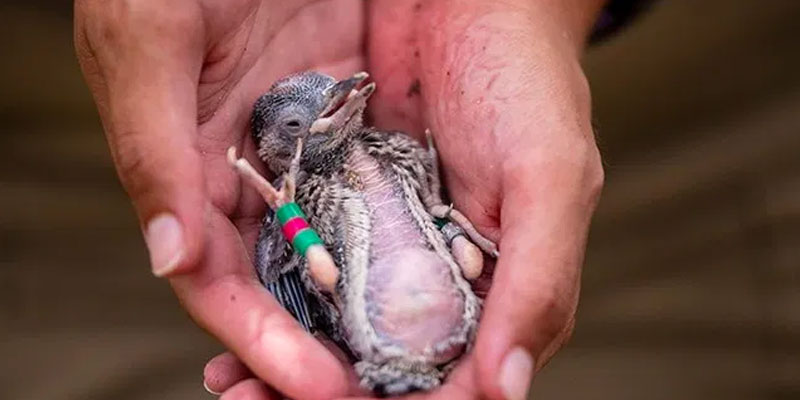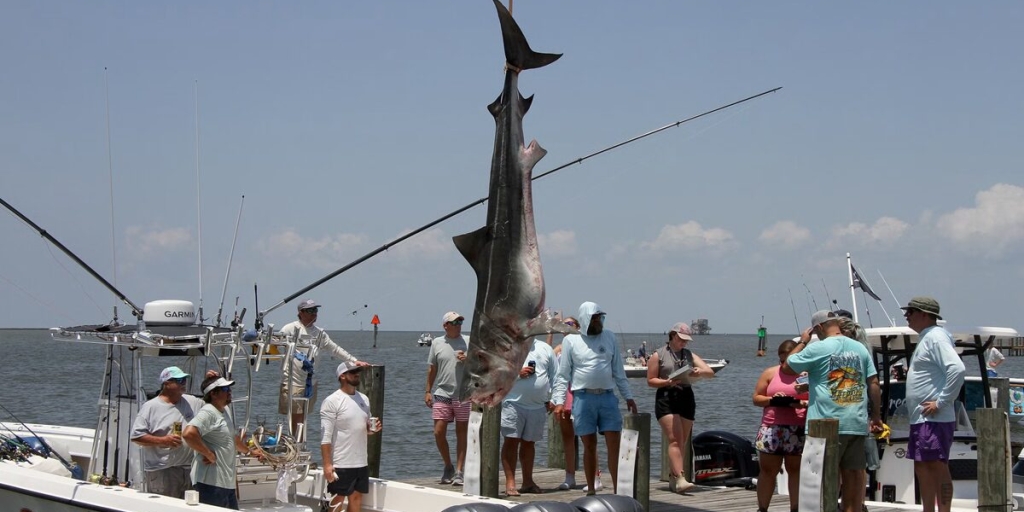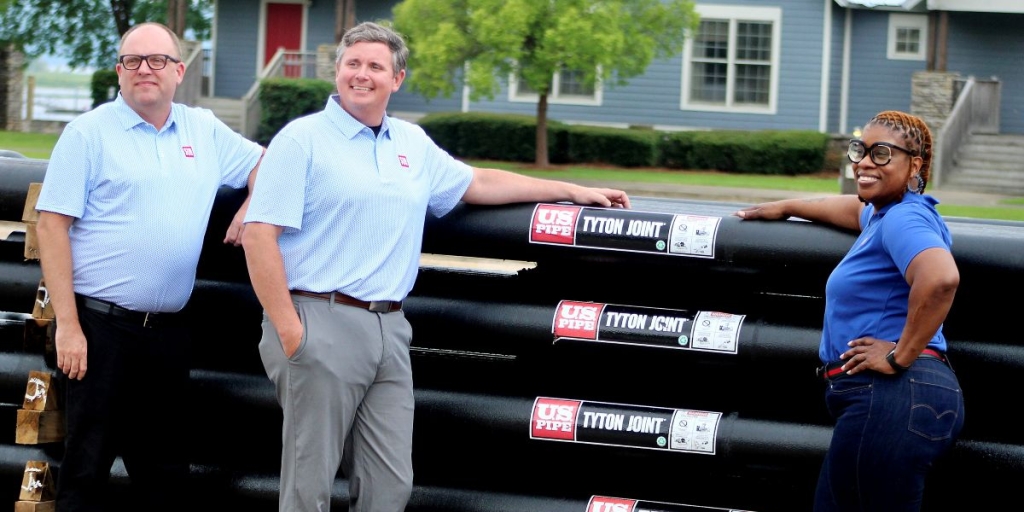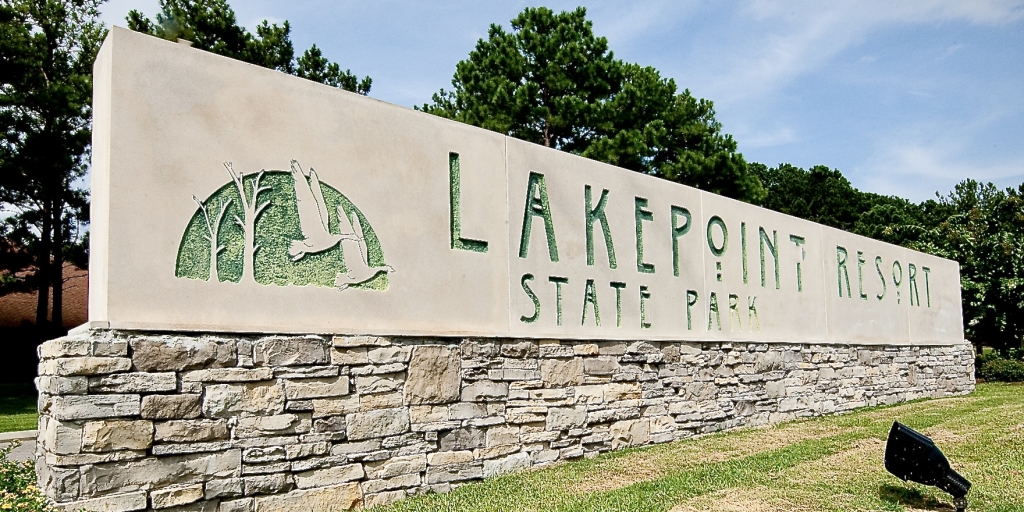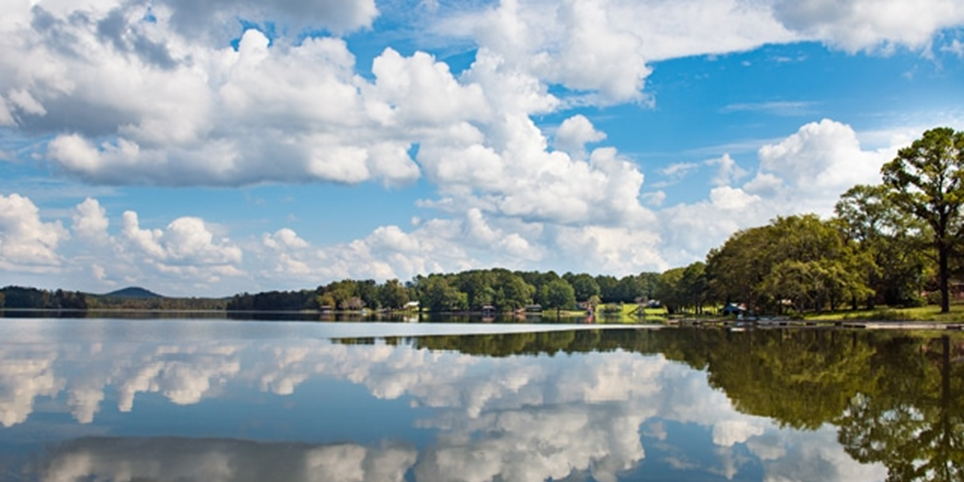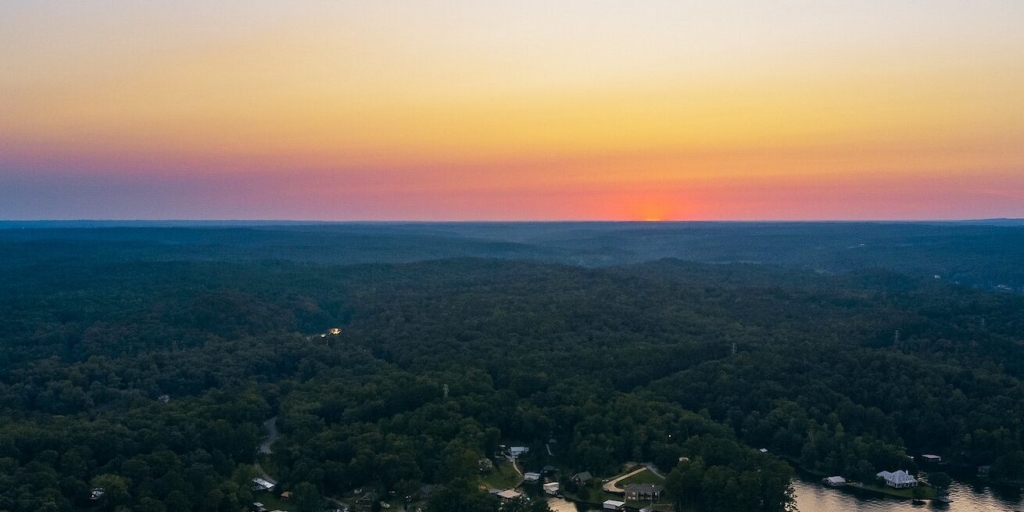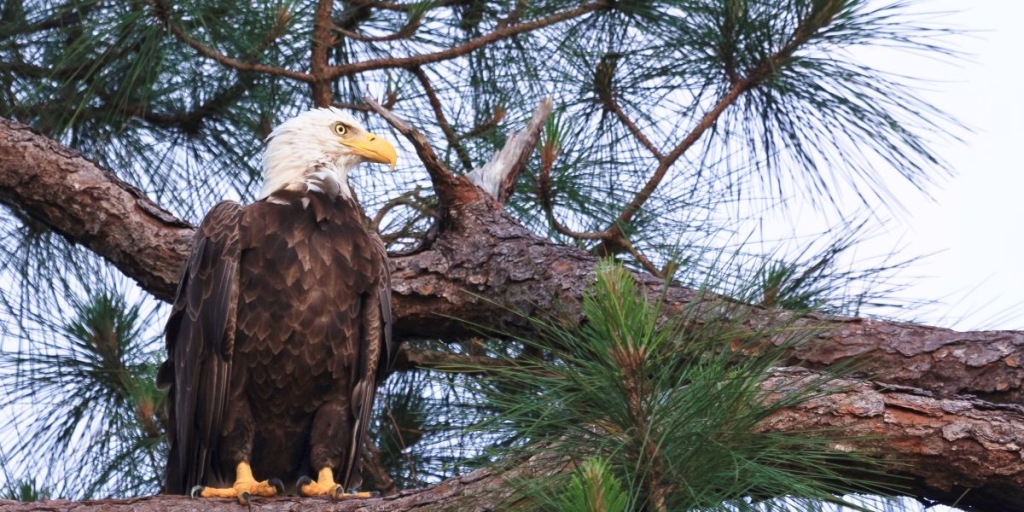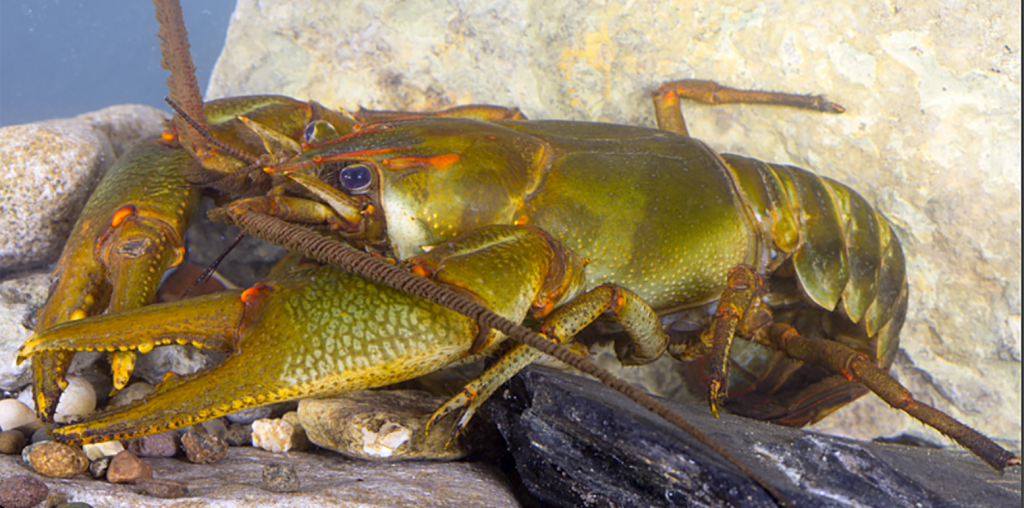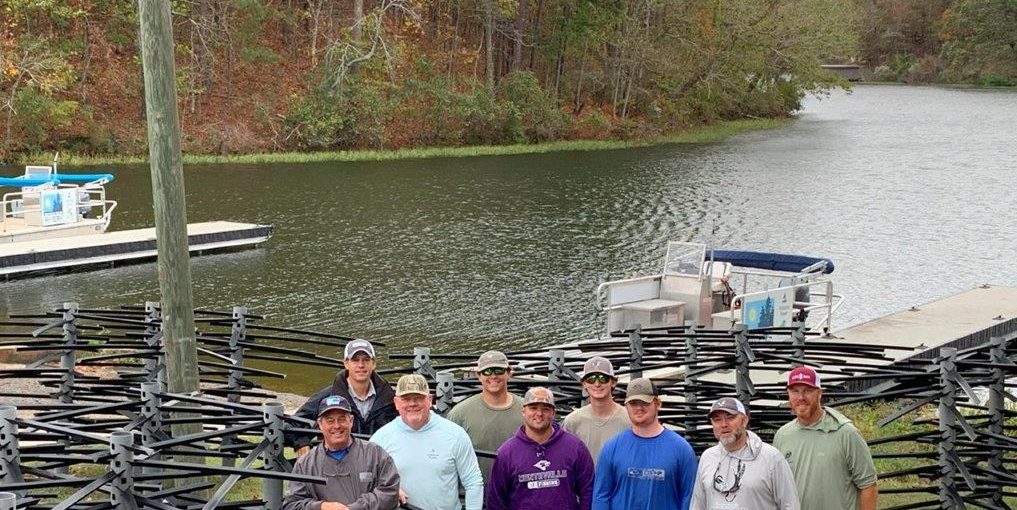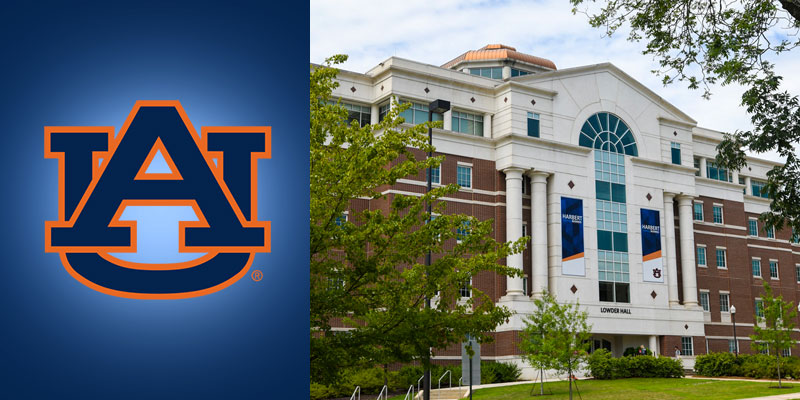A federally endangered woodpecker is thriving in central Alabama thanks to a partnership between Alabama Power, U.S. Fish and Wildlife Service (USFWS) and the Alabama Department of Conservation and Natural Resources (ADCNR.)
The red-cockaded woodpecker is making a slow, but steady comeback in the old longleaf pine forests around Lake Mitchell. Biologists from each organization spend much of their spring and early summer months monitoring cavities in the trees for nesting.
“The monitoring that we’ve done has shown the numbers of birds has increased,” said Chad Fitch, a biologist at Alabama Power. “We have 10 active clusters of birds on Alabama Power property. I think it’s an awesome thing.”
Alabama Power helping endangered red-cockaded woodpecker thrive from Alabama NewsCenter on Vimeo.
Five additional clusters are in the Coosa Wildlife Management Area, a state-managed Forever Wild area adjacent to Alabama Power property. ADCNR biologist Eric Soehren said the area is prime habitat for the endangered birds thanks to the more than 80-year-old pines and the coordinated management efforts between Alabama Power, ADCNR and USFWS.
“This is what they thrive and exist with,” Soehren said. “It needs this old-growth stand, managed in this way to persist.”
Soehren said two more clusters are located on nearby private property. Those landowners are provided monitoring assistance and protection from USFWS through the federal Safe Harbor agreement.
“This agreement was created by the U.S. Fish and Wildlife Service to assist landowners and to protect landowners from additional regulations when an endangered or threatened species comes on to their property,” said Mercedes Bartkovich, a nongame wildlife biologist at ADCNR. “With so much of the red-cockaded woodpecker population being on private lands in different areas, it’s imperative that we have those partnerships with the private landowners, as well.”
Bartkovich said some landowners initially resist joining the habitat management in fear they will have to modify their land-management plan.
“A lot of times the habitat management for quail or turkey are the exact habitat management tools you’d also be using for red-cockaded woodpeckers,” Bartkovich said. “There are definitely ways you can continue managing for what your goal is and still support RCW and other nongame threatened and endangered species.”
How Habitat Management and Monitoring Works
The process of managing the habitats begins each year in the winter when the biologists begin checking cavities inside trees to make sure there are still enough for the birds to use when they begin to nest in the spring.
“Most of them are artificially placed but sometimes we’ll actually have a natural cavity that’s excavated by the bird itself,” Soehren said. “We also check the status of the cavity to see if it needs to be replaced. We either classify them as suitable or not suitable.”
The process picks up speed in April when red-cockaded woodpeckers begin to nest. The biologists visit each cluster at least once a week and “peep” into the cavities with a special video camera called a peeper scope.
“The monitoring program consists of going out to each of the clusters and peeping the cavities to check for the number of eggs that are laid and the number of birds that are there,” Fitch said. “We document the number of chicks that actually fledge out of the cavities.”
Not all eggs survive. Natural predators such as flying squirrels and snakes may eat the eggs or the fledglings before they are old enough to fly away, but the ones that do survive are then color-banded by biologists to keep track of the bird movements.
“When you’re dealing with populations where you are closely monitoring, you want to uniquely mark each individual so you know the fate of that bird, where that bird ends up going, who it associates with, if it moves or if it stays within the cluster: those types of things,” Soehren said. “It gives you some really good population dynamic information.”
Once the nesting season ends in late June, the biologists document which fledglings survived and track their progress. They also use the offseason to optimize the habitats through controlled burns and to install new cavities to accommodate the growing population.
What Success Looks Like
All of the biologists say the ultimate goal of their work is to get the birds delisted as an endangered or threatened species. Soehren said one benchmark in the federal recovery plan is to double the number of active clusters at the Lake Mitchell habitat.
“The recovery plan states that you need a minimum of 30 active clusters for a viable population, so right now these measures are necessary until we reach that threshold,” Soehren said. “Once we reach that threshold, they will be more self-sustaining and conducive to their needs.”
The biologists also agree this can only be done by working together, a process Bartkovich said is one of the highlights of her year.
“It’s extremely enjoyable,” Bartkovich said. “This population would not be where it is without the partnerships with State Lands Division (ADCNR) and with Alabama Power. It’s a very coordinated effort.”
Fitch adds that the work to help the red-cockaded woodpecker is also helping other species.
“When we conserve the red-cockaded woodpeckers, we are not just conserving one species, but we are conserving other species, as well,” Fitch said. “I’m just really thankful of the partnership that we have with ADCNR and USFWS. It’s been a really collaborative effort and I’m really grateful for it.”
(Courtesy of Alabama NewsCenter)




